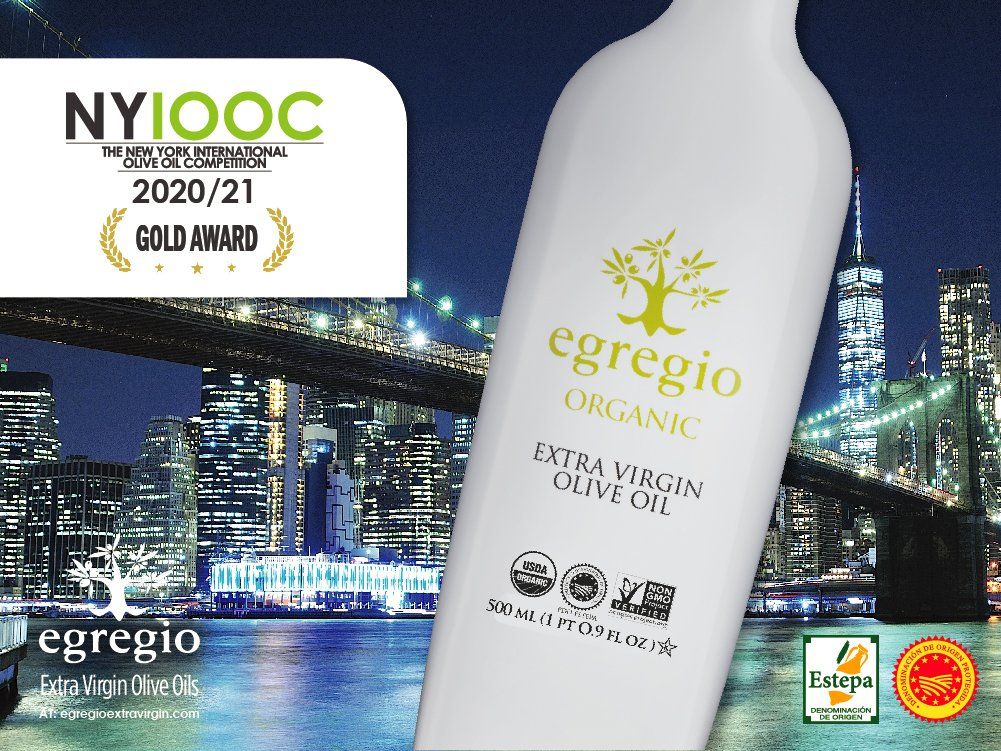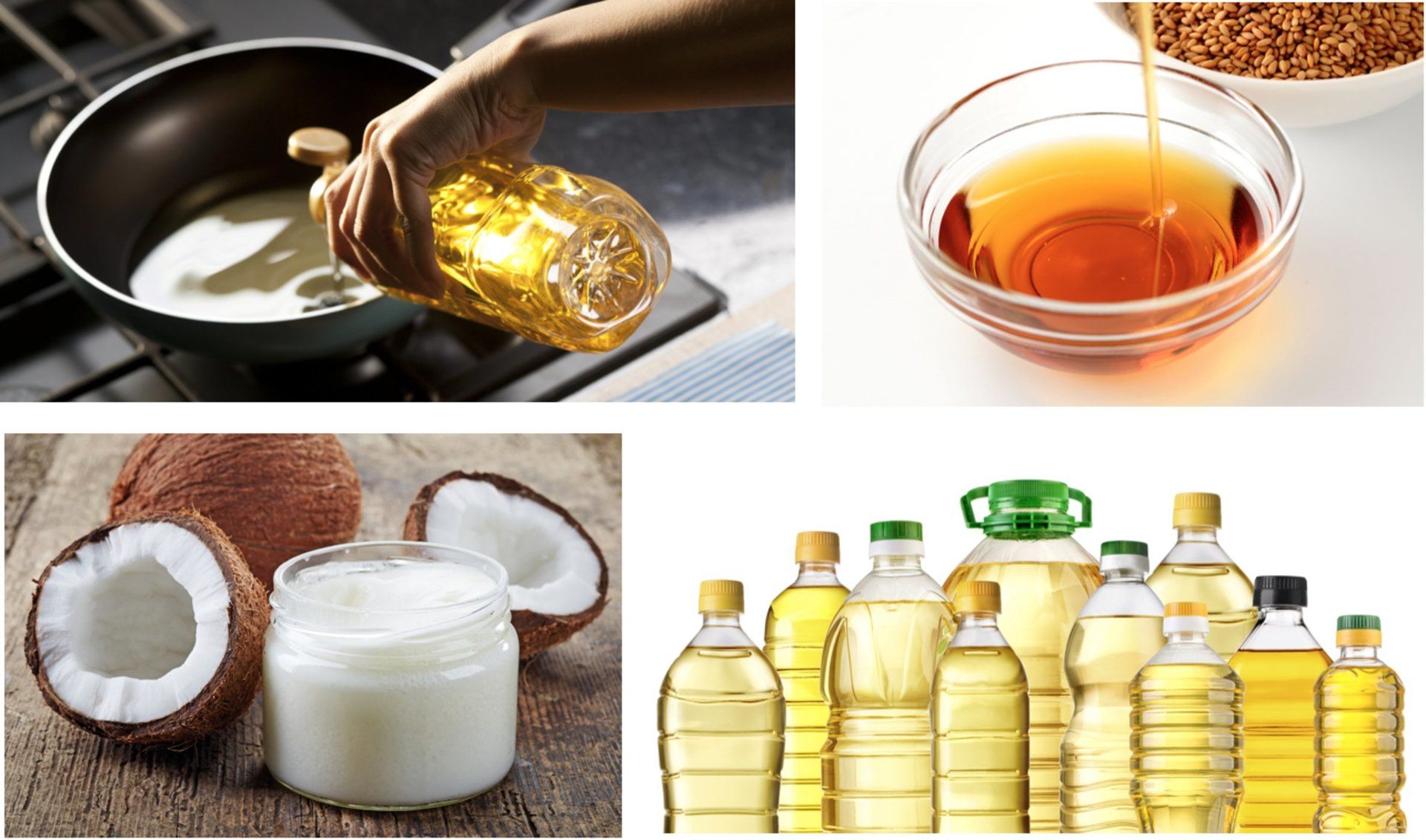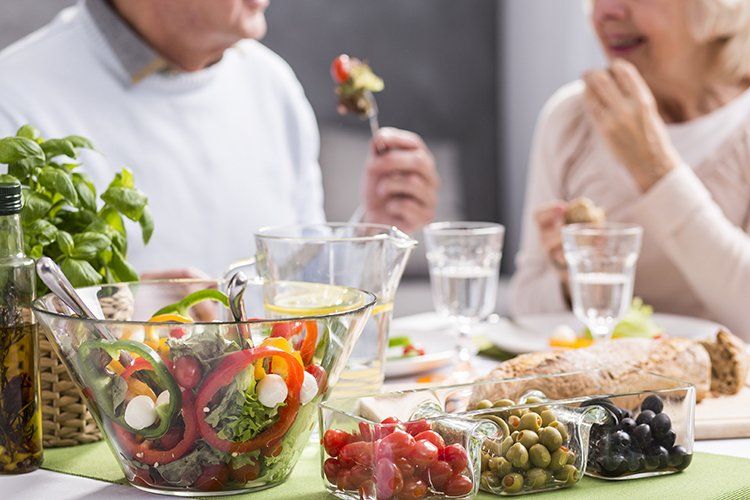The Science of Cooking Oils: Which Are Really the Healthiest?
These days, the shelf of the cooking-oil section of the supermarket is a crowded spot. This abundance of oil options can cause confusion about which oils may be the healthiest ones to use.
Over the past 10 years, the landscape of cooking oils has changed, said Jo Ann Carson, a professor of clinical nutrition at the University of Texas Southwestern Medical Center in Dallas. She pointed to the increased availability of high-oleic oils, the fairly recent arrival of coconut oil, and the wider availability of lesser-known oils such as grapeseed oil.
With so many cooking oils out there, it can be difficult to make sense of the latest health headlines about dietary fat in general, Carson said. [ Special Report: The Science of Weight Loss ]
Many consumers are confused about which types of dietary fat experts encourage or discourage in order to promote heart health, said Alice Lichtenstein, a professor of nutrition science and policy and director of the cardiovascular nutrition laboratory at the Tufts University Human Nutrition Research Center on Aging in Boston. Further complicating matters, there's been hype about coconut oil, and claims have circulated that "butter is back," Lichtenstein said.
Lichtenstein was part of an advisory panel for the American Heart Association that wrote a report on dietary fats and cardiovascular disease. For the report, which was published in June in the journal Circulation, the panel did a careful review of the scientific literature to clarify some of the controversies surrounding dietary fat, she said.
After evaluating the evidence, the panel recommended that Americans decrease levels of saturated fats (fats that come from meats, poultry, cheese, dairy products and tropical oils, such as coconut and palm oils) to reduce their risk of heart disease. People should replace saturated fats with unsaturated fats, which include polyunsaturated fats and monounsaturated fats, Lichtenstein said.
The overall message is to encourage healthy fats in the diet by replacing animal fats with vegetable fats, Lichtenstein told Live Science.
She said the bulk of the evidence favors polyunsaturated fats — found in fish, walnuts, and flaxseeds, as well as sunflower, safflower, soybean and corn oils — rather than monounsaturated fats, found in other types of nuts and seeds, avocados, and olive, canola and peanut oils. The data showed that if people replace saturated fats with polyunsaturated fats, they reduce their risk of heart disease somewhat more than if they replace saturated fats with monounsaturated fats.
In other words, polyunsaturated fats may be a little healthier, especially for people concerned about heart health, Lichtenstein said.
The panel's analysis of four so-called randomized, controlled trials — considered the "gold standard" of scientific evidence — showed that replacing saturated fat with polyunsaturated fat resulted in a 29 percent drop in the risk of heart disease. This reduction is comparable to that seen when people take statin drugs, according to the report.
Replacing saturated fats with polyunsaturated or monounsaturated fats is good for the heart because it decreases the levels of LDL ("bad")cholesterol and as well as fats in the blood called triglycerides, both of which are risk factors for heart disease.
Selecting oils
So what do the findings of the report suggest about how you should use cooking oils?
The main points are to use cooking oils in moderation, Lichtenstein said. The government's U.S. Dietary Guidelines recommend that Americans include a small amount of oils in their diets every day to supply essential fatty acids, because the body can't make these acids and thus must get them from food. There are two such fatty acids, and both are polyunsaturated fatty acids: linoleic acid and alpha-linolenic acid.
But all cooking oils are composed of three different types of fatty acids: monounsaturated fats, polyunsaturated fats and saturated fats. Each oil is categorized based on which type of fatty acid is the most prominent in it. For example, olive and canola oils are considered mostly monounsaturated fat, while corn and soybean oils contain mainly polyunsaturated fat. Coconut oil is predominantly saturated fat.
To help you select some of the healthiest oils while still pleasing your taste buds, here is a rundown of 10 cooking oils. Some oils have been well studied for their health benefits, while others have too little research from which to draw firm conclusions about their effects on heart health. (Story continues below infographic.)
Avocado oil
Avocado oil is rich in monounsaturated fat (70 percent of the fats in the oil are monounsaturated), and it has one of the highest levels of monounsaturated fat among cooking oils, second only to olive oil. Like olive oil, avocado oil is also low in polyunsaturated fats (10 percent of the fats in the oil are polyunsaturated).
Compared with other vegetable oils, avocado oil has a higher saturated fat content (20 percent), but this percentage is much smaller than the percentage of saturated fat in butter, lard or tropical oils, such as coconut or palm oils. Avocado oil is a fine oil to use, although it tends to be more expensive than other oils and may be harder to find, Lichtenstein said. It has a mild flavor similar to avocado, and the oil can withstand high cooking temperatures, making it suitable for sautéing, grilling, roasting or using in salad dressings.
Canola oil
Canola oil also has relatively high monounsaturated fat content, Carson said. But although it contains a higher proportion of monounsaturated fat (62 percent of the fats in this oil are monounsaturated), canola oil is also a good source of polyunsaturated fat (32 percent).
In addition, canola oil has the lowest level of saturated fat among cooking oils (7 percent). It is also one of the few oils that contain a good plant-based source of omega-3 fats, a beneficial type of polyunsaturated fat.
A 2013 review of studies published in the journal Nutrition Reviews found that when people use canola oil to replace saturated fat in their diets, it can help to reduce their total cholesterol levels and LDL cholesterol levels, which can reduce people's risk of heart disease.
This neutral-flavored oil comes from a plant called the rapeseed, which is widely cultivated in Canada and is responsible for its name, a derivative of "Canadian oil, low acid." (The "low acid" refers to versions of the rapeseed plant that are bred to have low erucic acid content. High levels of erucic acid can be toxic.)
Canola oil is a versatile and practical cooking oil that's not very expensive and can be used in a variety of ways, from baking and grilling to stir-frying and making salad dressings, Carson said.
Coconut oil
Made from the fruit of the coconut palm tree, coconut oil has been promoted as a better alternative to butter. It is a white solid at room temperature with a consistency resembling that of butter or shortening rather than a liquid oil.
Consumers seem to have bought into the hype that it's among the healthier options, and vegans, who eat no animal fat, may use it as a butter substitute. In a 2016 survey published in The New York Times, 72 percent of consumers rated coconut oil as a "healthy food" compared with 37 percent of nutrition experts. Nutrition experts, in contrast, noted that coconut oil is high in saturated fat (92 percent), and recommended using it only sparingly. In fact, coconut oil has more saturated fat than the same amount of butter or lard.
There is also limited science to back up marketers' claims that coconut oil is much better for the heart than butter is. After evaluating all of the studies available, a 2016 review published in the journal Nutrition Reviews found that people who consumed coconut oil had higher total and LDL cholesterol levels than those who consumed unsaturated fats, although the levels were a bit lower than in the people who used butter.
The review authors concluded that there is little evidence that coconut oil has any benefit to heart health compared with other types of saturated fat, such as butter or palm oil. After conducting a similar review, the 2017 advisory report from the American Heart Association did not recommend the use of coconut oil. The panel concluded that coconut oil "increases LDL cholesterol, a known cause of heart disease, and has no known offsetting favorable effects."
Summing it up, Lichtenstein, who served on the AHA's panel, said that coconut oil does not have any unique heart-health benefits, and its "halo effect" — meaning its perception by the public as a healthful food — is probably not justified from a scientific perspective. There is not any reason to use coconut oil rather than unsaturated oils, and there are potentially disadvantages from its high content of saturated fat, she said.
Grape seed oil
This versatile cooking oil is extracted from grape seeds left over from wine making, according to the Academy of Nutrition and Dietetics. A favorite of chefs and foodies, grape seed oil has a mild flavor that can be combined with other, stronger flavors. It's considered a good all-purpose oil that can be used for sautéing and roasting, or in salad dressings. Store grape seed oil in the refrigerator to prevent it from becoming rancid, food experts say.
Grape seed oil has a high percentage of polyunsaturated fat (71 percent polyunsaturated, 17 percent monounsaturated, 12 percent saturated), with a similar fatty acid profile to soybean oil (61 percent polyunsaturated fat, 24 percent monounsaturated, 15 percent saturated), Lichtenstein said.
According to a 2016 review of studies published in the journal Nutrition and Metabolic Insights, little is known about the effects of grape seed oil on human health. Few studies have looked at the heart-health benefits of this mostly polyunsaturated fat.
Extra-virgin olive oil and pure olive oilBecause of its prominent role in the Mediterranean diet, olive oil is a popular cooking oil.
Extra-virgin olive oil comes from the first pressing of the olives.
This results in an oil that has more flavor and a fruity aroma, and is
less processed, meaning it is considered "unrefined." It is also
typically more expensive than other types of olive oil and contains the
most antioxidants. Refined versions of olive oil, called "pure," are
lighter in color and milder in flavor than extra-virgin oils. Olive oils typically have the highest percentage of monounsaturated
fats among cooking oils (although some high-oleic versions of other oils
may have artificially boosted levels of monounsaturated fats).Olive oil
is also rich in antioxidants called polyphenols
A study done in Spain of about 7,500 men and women at high risk of heart disease found that people who were advised to consume a Mediterranean-diet supplemented with extra-virgin olive oil or mixed nuts had a lower rate of heart attack, stroke and death from heart-related causes, compared with people who were advised only to follow a generally low-fat diet. These findings appeared in 2013 in The New England Journal of Medicine.
From a heart-health standpoint, there is no real significant difference between extra-virgin olive oil and other kinds of olive oil, Carson told Live Science.
There are better choices than extra-virgin olive oil for cooking at high temperatures, such as when frying, because the oil cannot withstand very high heat before it starts to burn and smoke, Carson said. Refined, or pure, olive oil may be more suited for high-temperature cooking.
Because extra-virgin olive oil offers more flavor than other types of olive oil, it's a good option for sautéing vegetables, dipping bread or preparing salad dressings and marinades, Carson said.
Peanut oil
Among cooking oils, peanut oil has the highest monounsaturated fat content — about half (49 percent). Peanut oil has a similar percentage of polyunsaturated fat (33 percent) to canola oil, another mostly monounsaturated fat.
Its percentage of saturated fat (18 percent) is higher than that of other vegetable oils, but not to the point that it's a concern for heart health, and it still has less saturated fat than coconut or palm oils, Lichtenstein said.
A flavorful oil with a pale color and nutty aroma, peanut oil can withstand high heat and is a good choice for cooking Asian-inspired meals and stir-fries, according to food experts.
Sesame oil
Often used in Asian, Indian and Middle Eastern cooking, sesame oil is a
good mix of polyunsaturated fat (46 percent) and monounsaturated fat
(40 percent), Lichtenstein said. The remaining 14 percent is saturated
fat. It's not usually used as a cooking fat and is used more for its
intense flavoring, she noted.
Sesame oil lends a nutty flavor to any dish, especially toasted sesame oil, which has a darker color and bolder flavor. Refrigerate sesame oil after opening it.
Sunflower oil
Light in color and neutral in flavor, sunflower oil has one of the highest concentrations of polyunsaturated fat (69 percent) among cooking oils. It supplies some monounsaturated fat (20 percent) and is low in saturated fat (11 percent), making it an overall heart-healthy option. Sunflower oil is a good all-purpose oil because it can withstand high cooking temperatures.
Shoppers may also see "high-oleic" versions of sunflower or canola oils on supermarket shelves or high-oleic oils listed on the ingredient lists of processed foods. These oils have been modified to be richer in oleic acid, which boosts their levels of monounsaturated fat.
High-oleic sunflower oil, for example, would have a fatty acid profile that would more closely resemble an oil that is mainly monounsaturated fat, like olive oil, than it would conventional sunflower oil.
Food manufacturers are turning to high-oleic oils as replacement for trans fats, which are hydrogenated oils that can extend processed foods' shelf life, according to nutrition experts. As manufacturers eliminate their use of unhealthy trans fats, high-oleic oils have taken their place because these mostly monounsaturated fats are more shelf-stable than polyunsaturated fats.
Four studies have compared the heart-health effects of a diet rich in conventional sunflower oil, a polyunsaturated fat, with a diet rich in canola oil, which has more monounsaturated fat. The researchers concluded that sunflower oil and canola oil had similar effects: Both reduced people's levels of total cholesterol and LDL cholesterol, according to a 2013 review of those studies, published in the journal Nutrition Reviews.
Vegetable oil
Historically, vegetable oil has typically been soybean oil, Carson said. But these days, the term also may be used for a blend of different oils, she noted.
Soybean oil is primarily a polyunsaturated oil (61 percent polyunsaturated fat, 24 monounsaturated fat and 15 percent saturated fat). As a bonus, soybean oil contains some omega-3 fats, which are heart-healthy fats often found in salmon and sardines, but are less common in plant-based sources of food.
Vegetable oil made from soybeans is a neutral-tasting oil that does not have much flavor, Carson said. Nevertheless, it's a versatile, all-purpose cooking oil for sautéing and frying, or making salad dressings, she said.
For the complete article: https://www.livescience.com/59893-which-cooking-oils-are-healthiest.html
All about extra virgin olive oil...










